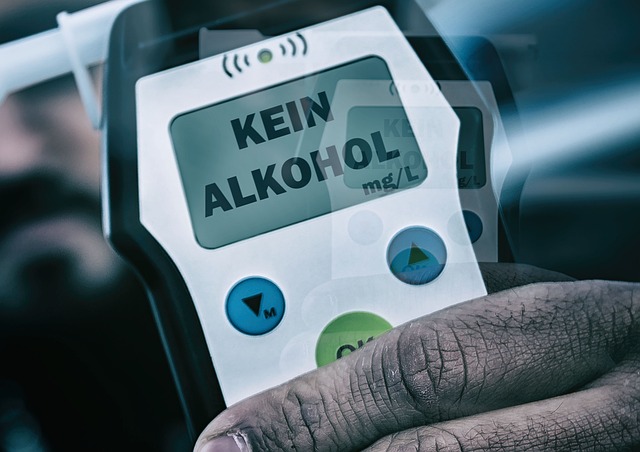Loopholes in vehicle impoundment laws can hinder efforts to combat driving under the influence (DUI) by allowing offenders to evade immediate consequences. These gaps, stemming from ambiguities in seizure criteria and impound duration, pose challenges for law enforcement. Clear guidelines and legal reforms are crucial to ensure fairness and consistency in vehicle impoundment procedures related to DUI Law, preventing unfair delays or the release of vehicles with potential DUI evidence. Updated DUI laws have significantly reduced recidivism rates and alcohol-related accidents by empowering officers to seize and remove vehicles used in DUI incidents promptly. Enhanced training for officers and technology-driven analytics can bridge enforcement gaps, leading to improved public safety through proactive legal changes.
“In the complex web of legal frameworks, vehicle impoundment and DUI (Drunk Driving) laws often present intriguing loopholes that pose challenges to enforcement agencies. This article delves into the intricacies of these gaps, exploring how they are exploited and the potential consequences. We examine ‘Understanding Loopholes in Vehicle Impoundment Laws’ and their intersection with DUI legislation, offering insights into the impact on public safety. Additionally, we provide a strategic guide to closing these gaps and present compelling case studies showcasing successful efforts to fortify legal enforcement.”
- Understanding Loopholes in Vehicle Impoundment Laws
- The Impact of DUI Legislation on Loophole Exploitation
- Strategies to Close Gaps and Enhance Enforcement
- Case Studies: Successful Closing of Legal Loopholes
Understanding Loopholes in Vehicle Impoundment Laws

Loopholes in vehicle impoundment laws can often be exploited, creating a complex web for those facing charges related to driving under the influence (DUI). These legal gaps may allow individuals to avoid immediate consequences, but they also pose challenges for law enforcement and justice systems. When it comes to DUI cases, understanding these loopholes is crucial as they can significantly impact the process of vehicle impoundment.
Vehicle impoundment laws vary across jurisdictions, and certain provisions might be open to interpretation. For instance, there could be discrepancies in the criteria used to determine if a vehicle should be seized or the length of time it remains in impound. Exploiting these ambiguities might lead to unfair delays or even release of vehicles with potential evidence linked to DUI offenses. As such, legal reforms and clear guidelines are necessary to ensure consistency and fairness in vehicle impoundment procedures under DUI Law.
The Impact of DUI Legislation on Loophole Exploitation

The tightening of DUI legislation has significantly reduced loophole exploitation, especially in regard to vehicle impoundment procedures. Previously, some legal loopholes allowed individuals convicted of driving under the influence (DUI) to avoid harsh penalties by manipulating the system. For instance, certain jurisdictions had vague or poorly enforced laws concerning vehicle impoundment, enabling offenders to keep their cars after a DUI arrest. This loophole enabled repeat offenders to continue driving, posing a risk to public safety and undermining the integrity of DUI enforcement.
The updated DUI laws have closed these gaps by establishing clear guidelines for vehicle impoundment. Law enforcement agencies now have more power to seize and impound vehicles used in DUI incidents, ensuring that dangerous drivers are removed from the roads promptly. This change has been instrumental in reducing recidivism rates and enhancing road safety measures. As a result, communities can experience a decrease in alcohol-related traffic accidents, fostering a more secure environment for all road users.
Strategies to Close Gaps and Enhance Enforcement

To effectively close gaps in enforcement, especially in areas like Vehicle Impoundment and DUI (Driving Under the Influence) laws, several strategic approaches can be implemented. One key method is to enhance training programs for law enforcement officers, focusing on recognizing and handling exceptions within these laws. This includes staying updated with legal amendments and interpreting them accurately to avoid arbitrary application.
Additionally, utilizing technology can significantly boost enforcement capabilities. Implementing data-driven analytics helps identify patterns and hotspots related to DUI incidents or vehicle impoundment cases. Such insights enable targeted patrols and proactive measures, ensuring that resources are allocated efficiently to high-risk areas.
Case Studies: Successful Closing of Legal Loopholes

In recent years, numerous successful case studies have demonstrated the effective closing of legal loopholes, particularly in the areas of vehicle impoundment and DUI (Driving Under the Influence) laws. One notable example involves a state that had previously faced challenges in enforcing strict DUI regulations due to an obscure loophole in its legislation. By carefully reviewing existing laws and collaborating with legal experts, policymakers managed to amend the law, closing this gap and significantly enhancing penalties for impaired driving. This strategic move led to a reduction in drunk-driving incidents and improved public safety.
Another compelling case study highlights the successful implementation of vehicle impoundment policies. In a city where repeat DUI offenders were evading consequences due to technicalities in the current laws, authorities conducted an extensive review. They identified a loophole that allowed drivers with multiple offenses to avoid immediate vehicle impoundment. Prompt action was taken to close this gap, resulting in stricter impoundment procedures and enhanced penalties for subsequent DUI offenses. This case underscores the importance of proactive legal reforms in addressing recurring issues within the justice system.
Loopholes in vehicle impoundment laws have long presented challenges in enforcing DUI (Drunk Driving) legislation. By understanding these gaps, implementing strategic solutions, and learning from successful case studies, authorities can significantly enhance enforcement efforts. Closing these loopholes is crucial to ensuring safer roads and holding offenders accountable under DUI laws, ultimately protecting public safety and fostering a more responsible driving environment. Effective strategies include stringent legal frameworks, improved communication, and technology integration, all of which contribute to a robust system that minimizes loophole exploitation in vehicle impoundment procedures.






